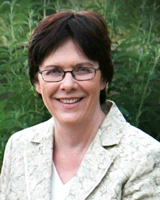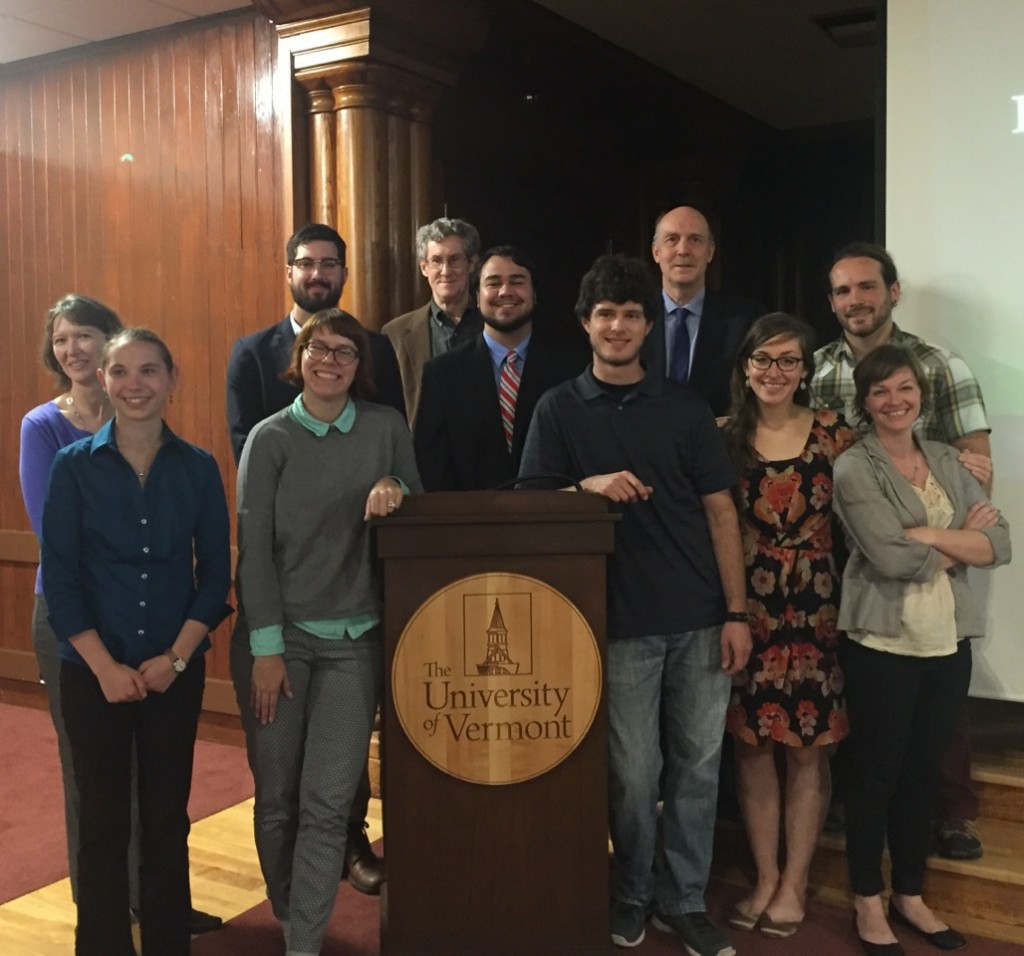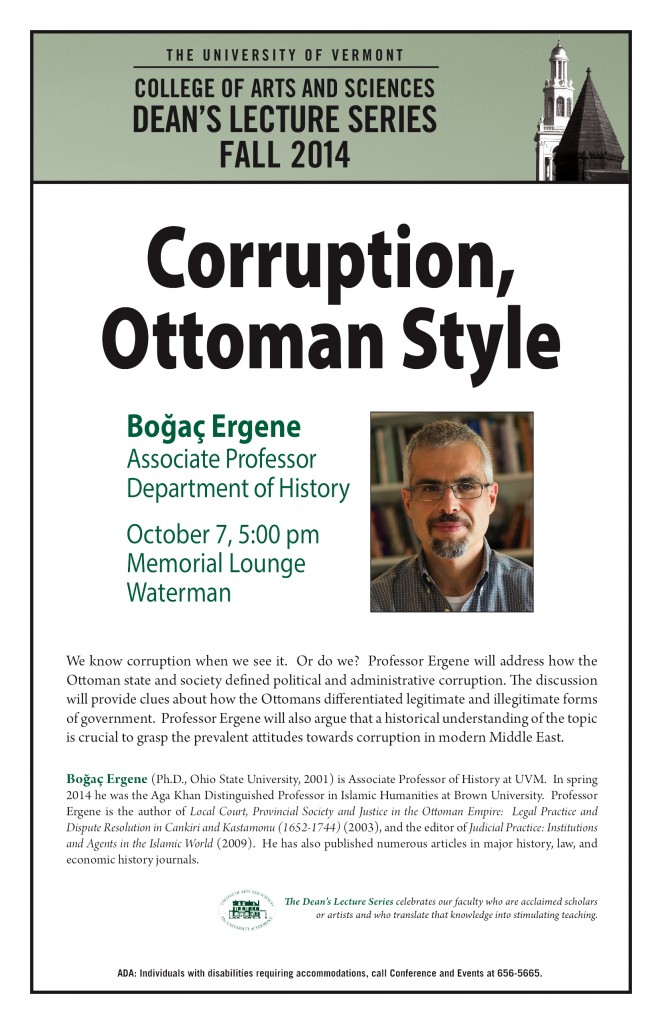“Five Questions With…” will be a monthly feature on our blog that profiles a member of the UVM history department.
To request a profile of a particular history department professor or staff member, or to submit questions for consideration for particular professors, please email history@uvm.edu with the subject line “Five Questions.”

This month, we are chatting with Professor Denise Youngblood. Professor Youngblood specializes in Russian and Soviet history, the history of modern east-central and southeastern Europe, visual culture, film and history, and cultural globalization. She also currently serves as the president of United Academics (UA), the UVM faculty union. Prior to joining the UVM faculty in 1988, Professor Youngblood was the Assistant to the Executive Director of the American Association for the Advancement of Slavic Studies. At UVM, she has also served as department chair, 1999-2003, and as Vice Provost for Faculty & Academic Affairs, 2003-05.
What made you want to become an historian?
I knew from a very early age that I wanted to write for a living. At first, I thought I’d be a novelist, but by the time I was a first-year student at Vanderbilt University, I realized that I lacked sufficient imagination. Then I wanted to be a foreign correspondent, which tied in my love of writing with my passion for travel. But in my sophomore year, I had an incredible teacher of Russian history, a teacher who really brought Russia alive, and I decided that history would allow me to combine my interests in culture, politics, and literature. I have not been disappointed. For me, history is the fundamental academic discipline because it is so all-encompassing.
Why did I become a teaching historian? Frankly, when I was in graduate school at Stanford University, I figured that teaching would be the price I’d have to pay to support a career of research and writing. At that time (40 years ago!), doctoral students had essentially no training in teaching, so becoming a teacher at UVM meant learning on the job. To my surprise, I fell in love with teaching. There is nothing more satisfying than being able to help students mature intellectually.
Why Russian history?
Unlike many who take up the study of Russia, I have no Russian heritage. I’ve already pointed to the influence of a great professor in inspiring me to a deeper study of Russian, but the foundation had already been laid years earlier when I was in the 7th grade. Then, at the height of the Cold War, my social studies teacher decided to embark on an experimental curriculum for the year, focusing on the USSR and the PRC, with an idea that was radical for the time: to humanize the enemy. I was hooked.
Another factor was my subversive streak. My father was a die-hard Republican and a true Cold Warrior. Our family had the only bomb shelter in the neighborhood, and we spent the week of the Cuban Missile Crisis huddled in the basement. The bomb shelter was stocked with food, water, and weapons, to shoot the “Russkies” and any one who dared enter our house. I couldn’t think of anything more delicious than developing an interest in Russia. When my father discovered that I had even subscribed to Soviet Life, he told me that my life was ruined, that I’d never get a job! He never quite got used to the fact that I made my living out of Russia.
What is your most important educational experience?
Without a doubt, it was the year that I lived in the USSR, in the late Brezhnev era, 1978-79. I have a great advantage over the new generation of Soviet scholars who have never experienced the Soviet Union’s majesty and misfortune. I was there as a doctoral student researching my dissertation on the early Soviet film industry at the All-Union State Institute of Cinematography in Moscow on an exchange program that gave me some diplomatic privileges (like the right to use diplomatic mail and the diplomats’ grocery store), but I eschewed everything (except for the mail) to live like a Soviet. It was tough, but worth it. I gained a profound understanding of Soviet society that no book has ever adequately explained. This is why I encourage students on study-abroad programs to break from the safety of the group and get out of their comfort zone to explore.
What are you working on?
Although I teach “regular” Russian and East European history, my scholarly career has focused on an investigation of the Russian film industry from its inception in 1908 to the present. I have written seven books: Soviet Cinema in the Silent Era, 1918-1935; Movies for the Masses: Popular Cinema and Soviet Society in the 1920s; The Magic Mirror: Movie-making in Russia, 1908-1918; Repentance: A Companion (with Josephine Woll); Russian War Films: On the Cinema Front, 1914-2005; Cinematic Cold War: The American and Soviet Struggle for Hearts and Minds (with Tony Shaw); and Bondarchuk’s War and Peace: Literary Classic to Soviet Cinematic Epic, which came out last week.
I’ve also written numerous articles, which recently have focused on the “bio-pic” in the Stalin era and Russian cinema during World War I (for the centenary). I continue to study the Cold War: in September, I presented a paper at a conference in Moscow on “War and Peace as a Cold War Artifact,” and I’ve been asked, along with my collaborator Tony Shaw, to present the keynote address at a conference on sport during the Cold War that will be held in Moscow in May. Films on sport are a new avenue of research for me, and I look forward to learning about them.
What are you teaching this year?
This year is my second (and final) year as president of United Academics, the faculty union, which gives me a reduced teaching load. I am teaching HST 114, East European Nationalisms, this semester, which is a course about the development of nationalism in east-central and southeastern Europe (focusing on present day Czech Republic, Hungary, Poland, and Serbia). I like teaching this course because it introduces students to the rich histories of countries overlooked in most courses on modern Europe, which still tend to have a Great Power focus.
In the spring, I return to my bread-and-butter courses, HST 138, Russia since 1917 and HST 238 Seminar on World War II in the USSR. Soviet history is my specialty, and I’ll claim that there’s no history more compelling than this one. It has it all, intricate stories, indelible personalities, epic tragedies, sweeping victories. My seminar on WWII on the Eastern Front, which is a political, social, and cultural history of the Great Patriotic War, serves as a microcosm of Soviet history, in its grandeur and misery.
I am looking forward to teaching full-time in 2015-16.




